Predloga japonske animacije¶
This template is used to make Japanese-style animation. It is designed on the assumption that it was used in co-production, so please customize its things like layer folders according to scale and details of your works.
Osnovna struktura njenih plasti¶
Layers are organized so that your work will start from lower layers go to higher layers, except for coloring layers.
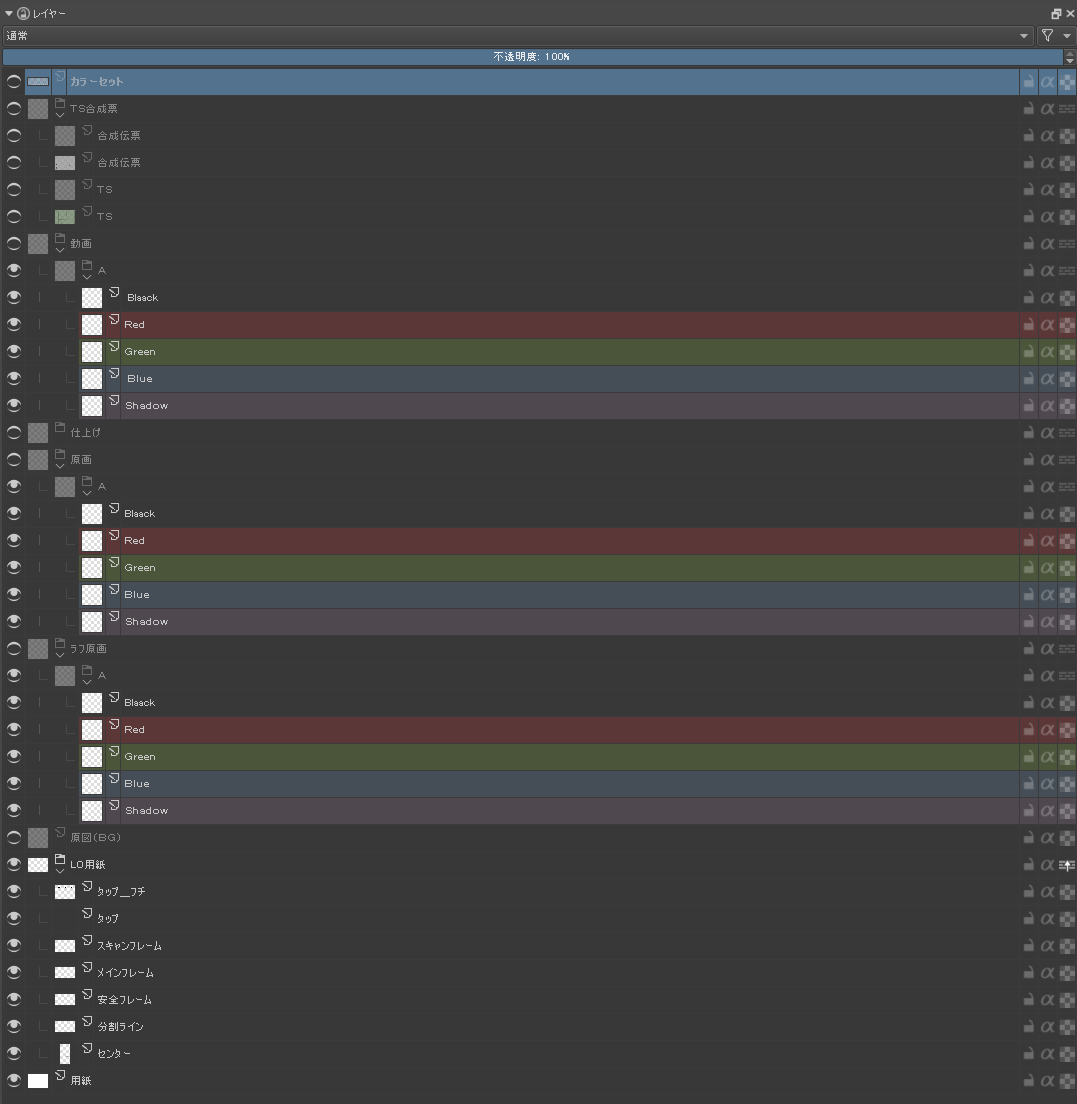
Vsebina njenih plasti¶
od spodaj
- Postavitev papirja
These layers are a form of layout paper. Anime tap holes are prepared on separate layers in case you have to print it out and continue your drawing traditionally.
- Postavitev (ozadje)
Te plasti bodo vsebovale ozadje scenografije ali postavitve, ki so skenirane iz tradicionalnih risb. Če jih ne uporabljate, jih lahko odstranite.
- Ključni osnutki
Te plasti se uporabljajo za digitalno risanje postavitev.
- Tipke
Kjer postavitvi dodate nekaj podrobnosti in jih razporedite tako, da narišejo »ključne sličice« animacije.
- Faziranje
Kjer dodate faze na ključne sličice za postopek barvanja in odstranite nepotrebne podrobnosti za dokončanje ključnih sličic (če smo natančni, končamo finalizacijo ključnih sličic, preden začnemo dodajati faze).
- Barvanje (pod Faziranje)
Where you fill areas with colors according to specification of inbetweens.
- Time Sheet and Composition sheet
This contains a time sheet and composition sheet. Please rotate them before using.
- Color set
This contains colors used to draw main and auxiliary line art and fill highlight or shadows. You can add them to your palette.
Osnovni koraki za izdelavo animacije¶
Key draft –> assign them into Time sheet (or adjust them on Timeline, then assign them into Time sheet) –> adjust them on Timeline –> add frames to draw drafts for inbetweening if you need them –> Start drawing Keys

Lahko dodate plasti in jih dodate na časovnico.
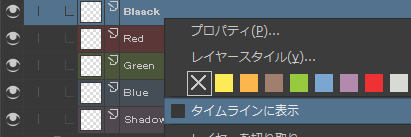
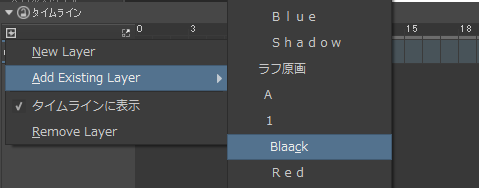
This is due difference between 24 drawing per second, which is used in Full Animation, and 12 drawing per second and 8 drawings per second, which are used in Limited Animation, on the Timeline docker.

This is correspondence between Timeline and Time sheet. „Black“ layer is to draw main line art which are used ordinary line art, „Red“ layer is to draw red auxiliary line art which are used to specify highlights, „Blue“ layer is to draw blue auxiliary line art which are used to specify shadows, and „Shadow“ layer is to draw light green auxiliary line art which are used to specify darker shadows. However, probably you have to increase or decrease these layers according to your work.
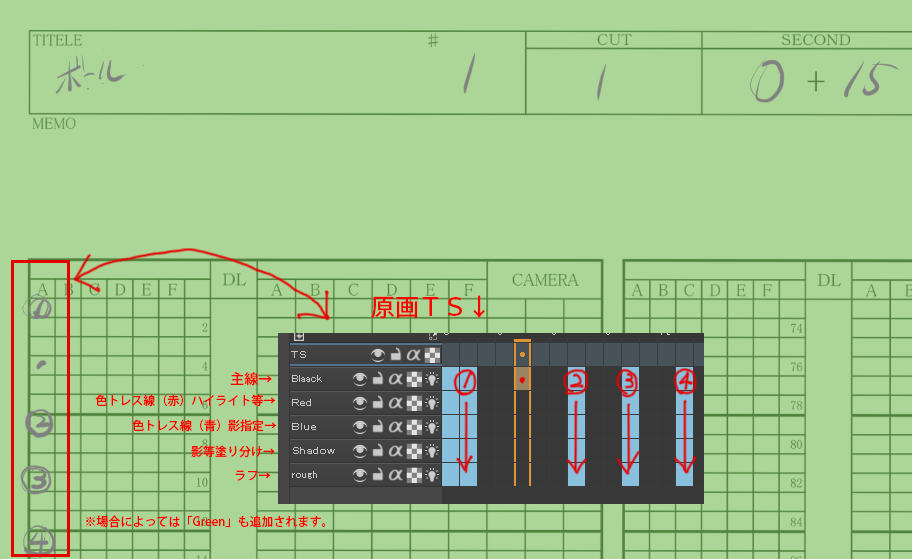
Finished keys, you will begin to draw the inbetweens. If you feel Krita is becoming slow, I recommend you to merge key drafts and keys, as well as to remove any unnecessary layers.
After finalizing keys and cleaning up unnecessary layers, add inbetweens, using Time sheet and inbetween drafts as reference.
This is its correspondence with Time sheet.
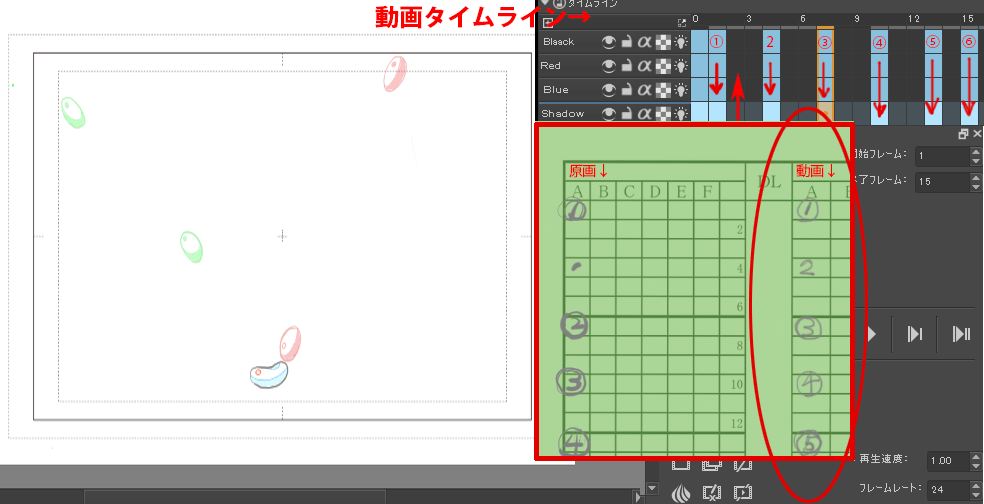
Once the vector functionality of Krita becomes better, I recommend you to use vector to finalize inbetweening.
If you do the colors in Krita, please use Coloring group layer. If you do colors in other software, I recommend to export frames as .TGA files.
Ločljivost¶
I made this template in 300 dpi because we have to print them to use them in traditional works which still fill an important role in Japanese Anime Studio. However, if you stick to digital, 150-120 dpi is enough to make animation. So you can decrease its resolution according to your need.
Originally written by Saisho Kazuki, Japanese professional animator, and translated by Tokiedian, KDE contributor.
